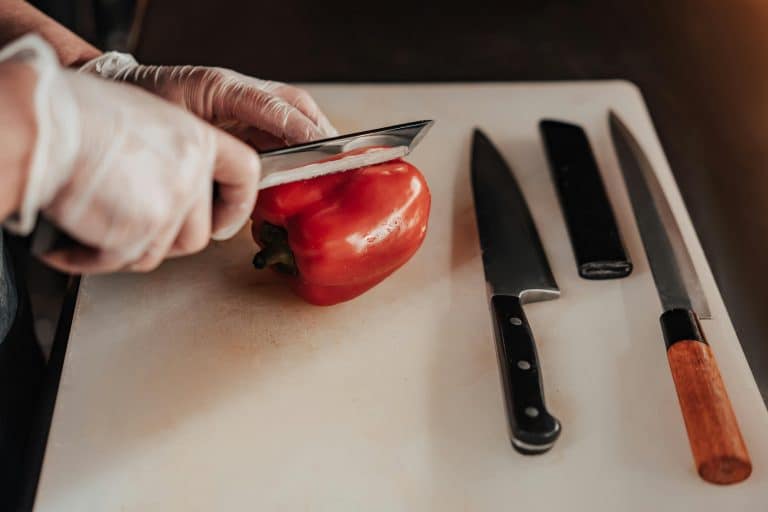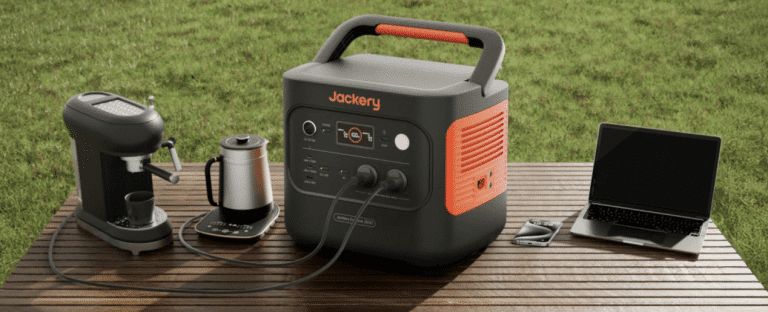A first slice through a ripe tomato sends a fine spray of juice across the board, and the sound of a sharp blade slicing cleanly always feels satisfying. Home cooks know that reliable knives make prep smooth — from cutting through meat for a dry rub marinade to chopping vegetables that cook evenly every time.
More kitchens now value simplicity over gadgets. The right blades — well-balanced, easy to handle, and sharp enough for precise work — save time and frustration. A small, dependable set supports daily cooking far better than an oversized block. When preparing meats for a dry rub or chopping vegetables for sides, knowing which knife fits each job keeps motion steady and turns routine prep into confident, enjoyable practice.
The Everyday Chef’s Knife
A reliable chef’s knife is the backbone of everyday prep, handling tasks from chopping vegetables to slicing meats with efficiency. An 8 to 10-inch blade gives reach without losing control, and a balanced handle keeps movement steady for everything from mincing garlic to carving a roast. It replaces several single-purpose blades for most daily meals.
Proper care keeps the blade performing at its best and ready for precise work. As one cooking knives manufacturer advises, “Wash and dry immediately after use. Avoid abrasive cloths, polishes, or steel wool when cleaning. After drying, lubricate the knife with wax to prevent moisture from affecting the blade and to keep it rust-free while maintaining its etched beauty. Sharpen when needed, then apply a bit of cooking oil to a towel and rub it along the blade for a clean, polished finish.” These habits maintain sharpness and make prep faster and smoother.
The Utility Knife Advantage
The 5 to 6-inch utility blade fills the niche between a paring and a chef’s knife, handling smaller, precise jobs awkward for larger blades. It suits trimming, portioning fruit, and slicing sandwiches without crushing the crumb. A slim profile gives controlled cuts and speeds repetitive prep. It fits most hands and replaces awkward use of larger knives on small tasks.
Reserve one utility for acidic produce to prevent acid from dulling other blades, and sharpen frequently to keep the thin edge that finesse tasks demand. For example, a quick hone before long prep maintains clean slices, while scheduled sharpening restores edge and keeps repetitive cutting efficient and less tiring.
Mastering the Paring Knife
Small, sharp, and nimble, a paring knife makes precision tasks faster and steadier than using a larger blade. Its compact 3- to 4-inch blade gives tight control for peeling, trimming, and working around stems or joints, so delicate ingredients stay intact while you remove blemishes or pare away pith and peel.
Grip it like a pencil for maximum effectiveness when segmenting citrus or deveining shrimp; the short blade lets you turn food quickly and avoid awkward wrist angles. Rinse and dry the knife after sticky or acidic work, and store it separately to protect the edge. A small paring kept in regular rotation makes fine work feel straightforward and safe.
When to Reach for a Cleaver
Cleavers bring raw power to the kitchen, designed to cut through bone and dense joints where standard blades struggle. A flat, broad face doubles as a crusher for garlic or ginger and can be used to tenderize meat, while a medium-weight, well-balanced head keeps swings steady and reduces wrist fatigue during heavy prep.
When chopping thick cuts, use firm, controlled pressure rather than chopping wildly to protect the edge and handle. Clean and dry the cleaver right away after use, removing bone or fat residue, and store it separately; those small steps preserve sharpness and keep the tool ready for heavy tasks.
Specialty Knives That Earn Their Place
Specialty blades save time on tasks that standard knives make clumsy. A serrated bread knife slices through crusty loaves and ripe tomatoes without crushing the crumb, a boning knife uses a narrow, flexible blade to separate meat cleanly from bone, and a long carving knife produces even roast slices for better serving and reheating.
Store specialty knives where blades won’t rub other metal, using a magnetic strip, cushioned block, or sheath to protect edges. Wipe and dry after use, sharpen occasionally, and reserve each design for its intended task to keep performance steady; add a specialty knife only when it fits your cooking needs.
Well-kept kitchen knives bring ease and precision to everyday cooking. Each blade proves its value through steady use, saving time and minimizing strain. A sharp chef’s knife manages main prep, while a utility and paring knife handle fine detail that finishes each dish cleanly.
With proper care, these tools remain reliable long after the meal is done. Simple routines — washing, drying, and sharpening — keep every edge ready for trimming herbs or preparing meats for a dry rub. Focus on balance, comfort, and control, and you’ll notice smoother prep and more satisfying results in every slice.









